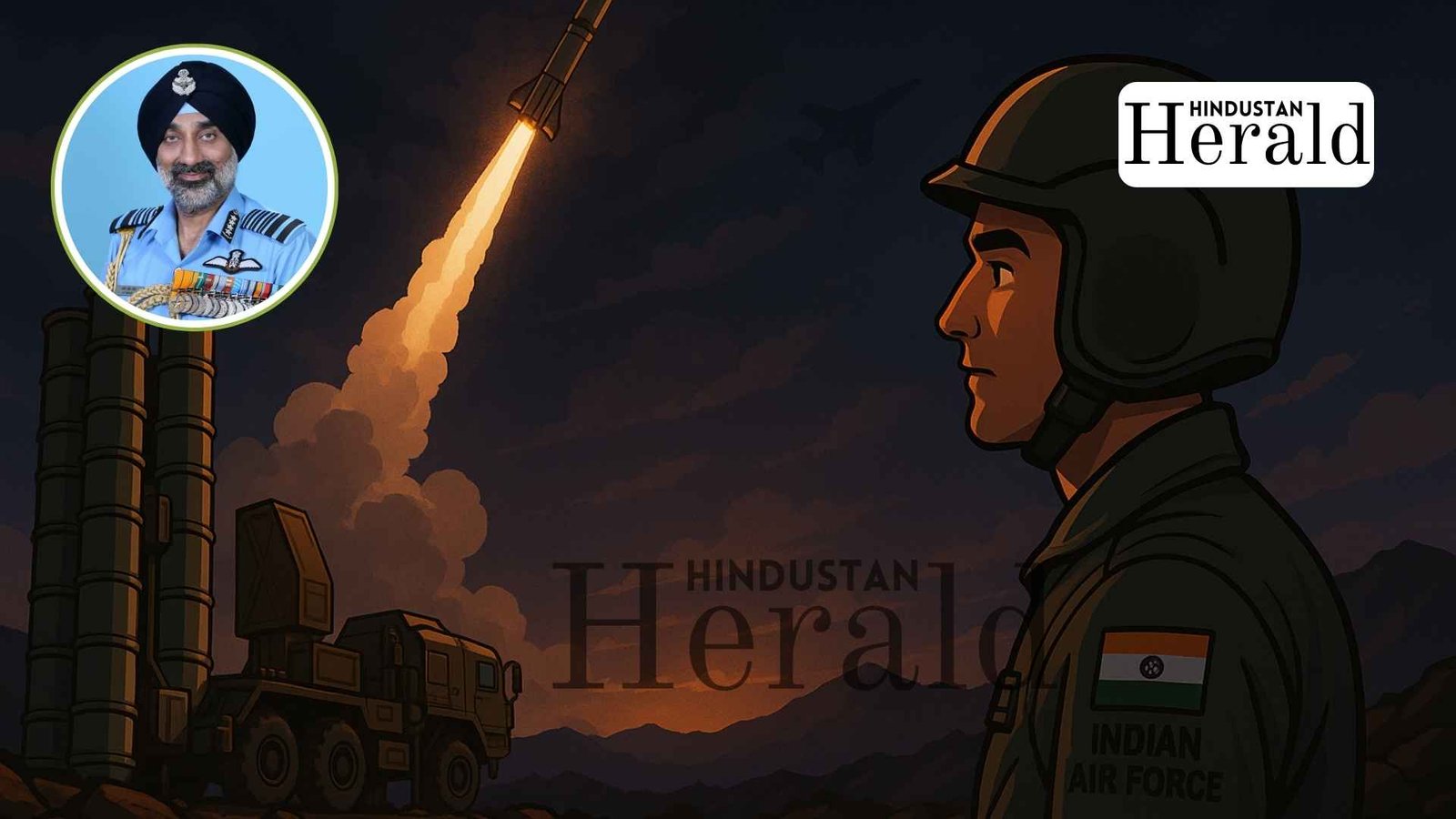New Delhi, August 9: A week after Operation Sindoor stunned the subcontinent, official briefings from the top brass of the Indian Air Force and Chief of Defence Staff are painting a picture that is equal parts precision warfare, strategic restraint, and national symbolism. The confirmed tally five Pakistani fighter jets and one high-value airborne surveillance platform shot down marks what Air Chief Marshal A P Singh has called the largest recorded surface-to-air kill in military history.
S-400 Emerges As The Star Of The Sky
Speaking at a closed-door interaction, later reported by NDTV, ACM Singh disclosed that the S-400 missile system was the decisive factor in neutralising enemy aircraft well before they could cross into contested airspace. The “large aircraft” destroyed likely an AEW&C or ELINT surveillance platform was hit at extreme range, underscoring the system’s reach and deterrent value.
Military analysts have long debated whether the S-400’s role in Indian air defence was more symbolic than practical. Operation Sindoor appears to have ended that discussion. “Game changer” was the Air Chief’s phrase, and in the corridors of Air Headquarters that term carries weight.
The Calculated Halt After “Aur Maarna Tha”
Interestingly enough, Singh also revealed that there were voices within the armed forces urging further strikes “Aur maarna tha”, as he put it but the government opted for a pause once objectives were met. According to Hindustan Times, Singh called it a “good decision” that avoided dragging the operation into an open-ended escalation.
In a region where retaliatory spirals have historically been the norm, halting mid-momentum is a notable departure. “You fight to achieve your aim, not to prolong the fight,” one senior officer said, hinting at a broader doctrinal shift.
Psychological Shockwaves Across The Border
The military’s victory was not just in hardware destroyed. General Anil Chauhan, the Chief of Defence Staff, told The Economic Times that the operation’s psychological impact on Pakistan was “huge” and immediate. He stressed that while active aerial engagements had ceased, aspects of Operation Sindoor were still underway in the form of strategic posturing, information dominance, and joint-force adaptability.
Security observers believe such psychological disruption is almost as valuable as battlefield gains, particularly in a nuclearised environment where deterrence often rests on perception as much as capability.
Rakhis From 16 Countries
If the precision strikes gave the military an edge, the public response gave it a heart. The Times of India reported that more than 65,000 rakhis were sent to soldiers involved in Operation Sindoor, collected under the initiative of Vadodara’s retired teacher Sanjay Bachav. What began as a modest local tradition over a decade ago has, in the aftermath of Sindoor, become a transnational gesture of solidarity, with parcels arriving from 16 countries.
For the troops stationed far from home, the thread around their wrist this year will carry a resonance beyond ritual a reminder that the nation was not merely watching but participating in their mission.
Art, Memory, And National Narrative
In Ranchi, culture is taking its turn in the commemorations. Union Minister Sanjay Seth has announced a week-long painting festival dedicated to Operation Sindoor, running from August 28 to September 3. Nearly 20,000 students from schools across the city will submit artworks, with the winning piece to be presented to Prime Minister Narendra Modi.
The festival, as reported by The Times of India, is not just a cultural event but an exercise in shaping the collective memory of the operation. For many students, it will be their first engagement with the idea of national security beyond textbook paragraphs.
More Than A Military Episode
For what it’s worth, Operation Sindoor’s legacy may not lie solely in its kill count or technological showcase. In the span of days, it has moved across registers from strategic deterrence to psychological leverage, from citizen participation to cultural canonisation.
The restrained end to active hostilities has avoided the costly spiral of retaliation, yet the operation continues to influence the region’s security calculus. And as those 65,000 rakhis make their way to remote posts, and as Ranchi’s young painters sharpen their brushes, the story of Sindoor is being told in both steel and silk.
Stay ahead with Hindustan Herald — bringing you trusted news, sharp analysis, and stories that matter across Politics, Business, Technology, Sports, Entertainment, Lifestyle, and more.
Connect with us on Facebook, Instagram, X (Twitter), LinkedIn, YouTube, and join our Telegram community @hindustanherald for real-time updates.
Covers Indian politics, governance, and policy developments with over a decade of experience in political reporting.






